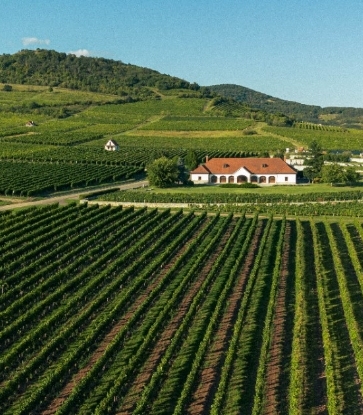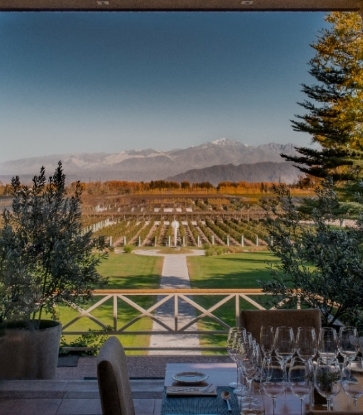Blind tasting is a term we winos use in reference to our ubiquitous penchant for tasting wines without seeing the label or otherwise knowing what the wine is. Apart from being a popular sport among wine geeks, it is also a useful means of testing the abilities of wine students and occasionally a manner of assessing wines by professionals. The object is to ascertain such features as the grape variety(s), region, vintage/age, and/or quality purely through the acts of seeing, smelling and tasting the wine in the glass. Variations include a single-blind tasting, whereby one aspect such as region or grape variety is known or a double-blind tasting, in which case nothing is known about the wine.
OK, so apart from the opportunity to show-off, why might wine drinkers want to participate in such seemingly silly parlor games? Hate to admit it, but the chance to pit your natural tasting abilities and wine memory against your friends’ can be a lot of fun. Blind tasting meet-ups are the poker nights of cork dorks.
Professionally speaking, blind tastings can further serve as a rigorous means of testing tasting skills, experience and wine knowledge, as demonstrated by institutions that perform annual blind tasting exams for their students such as the Institute of Masters of Wine or the Court of Master Sommeliers as part of their accreditation processes. Beyond this, blind tasting can help to dispel any preconceptions that the taster may have about a particular grape, label, region or vintage, for example, though presumably such preconceptions shouldn’t exist among unbiased professionals. Another justification can stem from a latent insecurity possessed by even professionals when it comes to tasting “expertise” along with that dastardly duo of wine tasting deadly sins—pride and ego—that often lead tasters into supporting a revered label or vintage that isn’t always all it’s cracked up to be. But let’s face it, if you are experienced enough to understand and recognize wine quality in a glass, then you shouldn’t allow terms like “Grand Cru” on the label bully you into agreeing that the wine is grand when it ain't or vice versa. Finally, a major and perhaps the most valid justification for blind tasting among professionals is to preclude the possibility of being swayed by the financial agendas of the taster’s employing publication or company or any other personal biases that may exist (disclosed or not).
What are the shortcomings of blind tasting?
When done strictly for fun, none. Presumably there will be a stage during the proceedings when you will be able to enjoy the wine for not only its tangible benefits, but its intangible ones as well: knowledge of the wine’s story, history, maker and place. Intangible attributes can sometimes be just as important in the enjoyment of wine as the tangible ones. An example that springs to mind is my experience of drinking a 1917 Château Lafite and imagining the World War I hardships that were endured just to produce that bottle . . . and yet, it endures. Other examples are those occasions when I have had the opportunity to drink the last vintage of a wine produced by a beloved winemaker. I also believe that knowing what the wine is can often help an unbiased, professional taster understand the quality and potential of a wine a little better. Anyone who has tried the wine of an uniquely evocative terroir such as Domaine de la Romanée-Conti’s Romanée-Conti vineyard when first bottled will get my point here. Understanding how this wine will develop using your experience of other R-Cs at a similar stage in youth and then further on down the line will help provide context and ultimately a better assessment of the wine than knowing nothing at all. The wine world is built on the premise that singular wines develop singularly—so why should they all be professionally assessed as one of the herd?
I have a fair bit of blind tasting experience, with which comes a few tricks of the trade. This said, when it comes to playing for fun, as my wine cohorts will gleefully attest, I am almost always the worst blind taster in all of my recreational tasting groups. It’s quite possibly a bone of contention among them, since I was probably only allowed into the tasting groups in the first place owing to my credentials as a Master of Wine. Although it can’t help that I don’t actually “taste” so much as “drink” at our periodic just-for-fun meetings, more to the point, I’m a terrible blind taster because I allow myself to make a common rookie mistake: I can’t resist trying to second guess the person who brought the bottle. For example, if it’s obvious that I’ve got a Bordeaux blend in front of me, even if it appears to be a classic Médoc, I’ll start thinking, “Well, so-and-so has a huge collection of Napa Valley wines and tends to favor the more European-styled examples like Dominus, is in fact known to have every vintage of Dominus and therefore this has to be Dominus.” For sure, it may well taste more like a Grand Cru Classé Saint-Estèphe, but because I don’t think so-and-so has or even likes Saint-Estèphe, there I go, wandering around Yountville territory, trying to shoe-horn a cooler vintage onto what I’m convinced is a hugely structured, muscular Dominus. In the end, sure enough, so-and-so goes and unveils a Montrose with a smirk.
Never second guess your wine host.
This becomes tougher and tougher to do, especially since the better you to know your group, the better you know the individual preferences and cellars of your fellow tasters. Forget them or forget about walking out of the tasting with one ounce of dignity, because part of the sport of blind tasting is in bringing the wines your friends will least expect you to bring.Go with your first impressions.
I proffer this saying among MW students—I do believe there is something in this. Your sense of smell is very closely linked to your memory. I have on occasion had the very good fortune to nail a wine simply by letting my sense of smell transport me to a time and place when I have experienced those same wine scents before.But assuming first impressions get you nowhere, I suggest a methodical approach to tackling the major unknown attributes that may require your identification:
1) Grape
2) Region
3) Age / Vintage
It is probably best to tackle identifying attributes 1 and 2 together, since they are linked by virtue of the fact that the climate and soil of a region pretty much govern the grape varieties that will ripen well there. Bluntly said, identifying the grape and region are fundamental to the sport of blind tasting. BUT, even the greatest experts get either or both of these wrong on occasion. A very famous bastion of the British wine trade, the late Harry Waugh, was once asked if he had ever confused a Bordeaux for a Burgundy and his honest reply was, “Not since lunch.”
Depending on the wine, sometimes the grape will seem more obvious and other times it will be the region. Classic, single variety wines such as Pinot Noir, Chardonnay, Riesling and Sauvignon Blanc are for sure easier to spot than Rhône blends or lesser-known indigenous Italian varieties. If the grape doesn’t scream out to you, seek a region. Restrained, earthy characters, chewy tannins and distinctly fresh acidity usually whisper it’s an Italian red for me. Similar characters with a softer structure of rounded tannins and rather low acidity might signal a southern Rhône blend. Etc.
Look for the clues in the wine’s characters and structure (e.g. tannins and acidity).
Worst case scenario is when you put your nose in the glass and draw a complete blank. This is the time to don your Sherlock Holmes cap. Specific aroma compounds and structures are the unique signatures of variety and place. Examples: notable pyrazines (bell pepper or herbal streak) in a red wine suggest Cabernet Sauvignon over other similar red varieties. In a white wine, overt pyrazines would suggest Sauvignon Blanc. A significant black pepper (rotundone) note in a red suggests Syrah (especially from a cooler climate and/or vintage). Firm yet velvety tannins suggest a great Merlot whereas the same firmness of tannins with a grainy/pixilated texture suggest Cabernet Sauvignon. Riesling has markedly crisp acidity, whereas Pinot Gris has more moderate acidity. Burgundy is all about satiny structure. Italy is edgy. Barossa is opulent. Bordeaux is precise. This is all, I’m sure, wine tasting 101 for most lovers of the vine. And yet it is so easy to panic and overlook the wine’s basic structural and character elements when you are drawing that blank.Finally, to really clean up in a blind tasting, you’re going to need to lay the exact vintage down as your trump card. OK, so everyone gets lucky sometimes with this but in order to do so with any regularity, there’s no getting around intimately knowing your vintages for all the classic regions. Then, you must be able to recognize them in a glass. Easier said than done for the overwhelming majority of “classic” years.




















